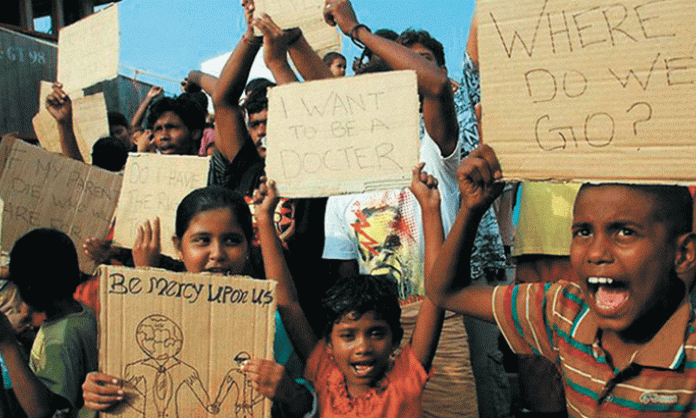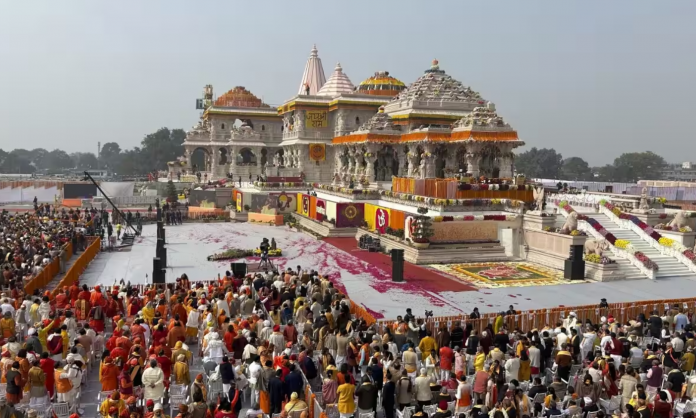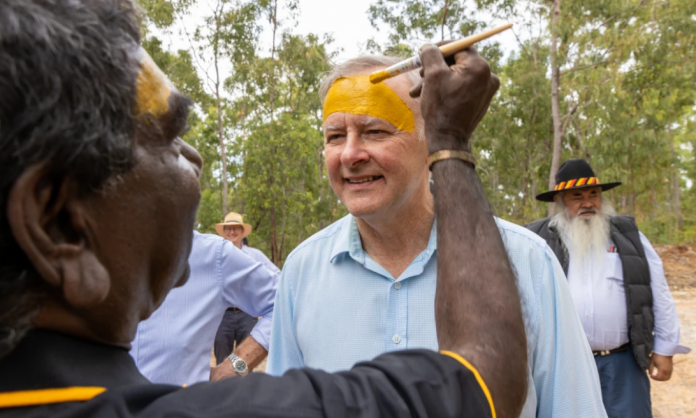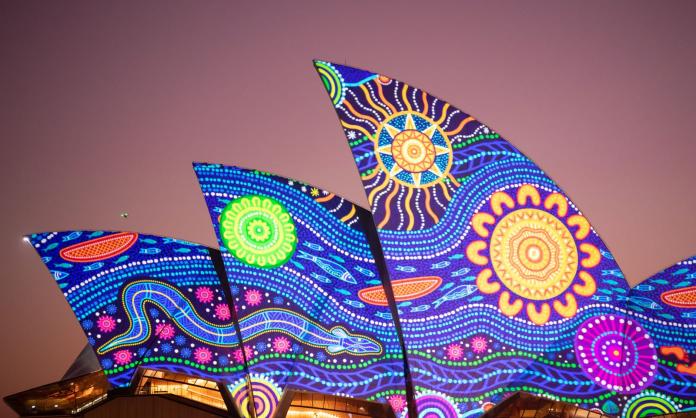Give me your tired, your poor,
Your huddled masses, yearning to breathe free,
The wretched refuse of your teeming shore.
Send these, the homeless, tempest-tost to me,
I lift my lamp beside the golden door!
– “The New Colossus” by Emma Lazarus, inscribed on the base of the Statue of Liberty
There was a time in the history of capitalism when it was considered good form to erect a giant statue in the harbour of your greatest city, and inscribe on its base a welcome to all those seeking refuge.
This stands in contrast to the miserable “vision” of Australia’s political leaders, whose “solution” for thousands of people literally dying to get here is to deport them to a malarial prison camp.
And yet, there is a continuity. Capitalism has always needed mass migration of workers. And at the same time, the system has directed vicious measures at many of those seeking to migrate. By the time the Statue of Liberty was completed, in 1885, the racist Chinese Exclusion Act had been law for three years. Some of the world’s “huddled masses” were not welcome to “breathe free” after all.
Jump forward a century and cross the Pacific and we find another apparent contradiction. John Howard’s government subjected refugees to systematic abuse, playing the racist politics of “border protection”. At the same time, Howard presided over a record intake of migrants. Labor has followed this pattern, introducing even more draconian policies towards refugees.
Both parts of this seeming contradiction – mass migration together with anti-migrant politics – flow from the central fact of capitalism: it is a system driven by profit, which is derived from workers’ labour.
Capitalism has always needed massive flows of human beings around the planet. In 1984 the Wall Street Journal reflected this, proposing a five-word amendment to the US constitution: “There shall be open borders”. Similarly, the growth and profitability of Australian capitalism have been dependent on successive waves of migration.
Yet for the capitalists, it’s not enough to get human beings in the right place to be exploited for profit. That exploitation must be organised and maintained. To do this, they use a number of tactics. Often some sort of legal disability will be imposed on migrants, “undocumented” or “guest worker” status being two of the most common. A deportable labour force, our rulers hope, will help ensure compliance.
There is also a conscious promotion of an “us and them” mentality towards migrants – in other words, racism. This conceals the us and them relationship between exploiters and exploited. Former British Prime Minister Tony Blair summed up the strategy with typical cycnicism in a memo leaked in April 2000: “There are a clutch of issues – seemingly disparate – that are in fact linked. They are roughly combining ‘on your side’ with toughness… Asylum and crime may appear unlinked to patriotism, but they are partly because they are toughness issues.”
In order to appear “on our side” while cutting education, health and working conditions, pro-capitalist politicians want to appear “tough” on asylum seekers.
The politics of great power rivalry has also dictated the fate of refugees under capitalism. For instance, more than two million refugees resettled in the US between the end of World War II and 1990. Some 96 percent were fleeing the Cold War enemies of the US, dictatorships which called themselves “Communist”. People fleeing US-backed dictatorships throughout the world received less sympathetic treatment.
Democratic revolutions swept Eastern Europe at the end of the 1980s, toppling the Stalinist dictatorships. The Cold War ended, and with it much of the great power interest in accepting refugees.
The result is that most developed nations offer less and less to the world’s poor huddled masses. In the late 1970s, the United Nations High Commission for Refugees believed there were around two million refugees worldwide. Some 250,000 of these people were being resettled permanently every year – largely in the West. By 2012, the number of refugees worldwide had exploded to around 16 million. But the UNHCR’s resettlement program has shrunk to only 88,000 per year.
To put this another way: in the late 1970s, every year, one in eight of the world’s refugees was offered a chance to migrate. Today, fewer than one in 180 refugees gets the same offer. To the extent that there is a “queue”, it has now stopped moving at all.
One result of this is people living in refugee camps for generations, as with the Palestinians and Rohinga refugees from Burma caught in Malaysia. Another is the increasing stream of boats laden with human cargo, washing ashore in countries from the Mediterranean to Australia.
Without a Cold War to win, the only use these refugees have for politicians is as fodder for racist scare campaigns. And the legacy of such campaigns in the past means there is plenty of resentment and fear for them to work with.
There is a long working class tradition of advocating open borders. While largely buried in Australia, it still has currency in the US, where undocumented migrants are a key section of the working class.
On May 1 2006, the largest demonstrations in US history shook every city in the country. In their millions, undocumented migrants, their families and supporters went on strike and took to the streets against a proposal that would criminalise the estimated 11 million people living without migration papers in the US. The proposal was quickly scrapped.
Six weeks later Nativo Lopez, one of the organisers of the protests, addressed a socialist conference in the US. All workers, he pointed out, create value – surplus value, or profit, to be specific.
The value created by the worker “is never denigrated, maligned, or declared as illegal. It is never accosted, arrested, interrogated, judged, or deported. Value never dies attempting to cross the desert… That which is produced by all workers – value – is embraced, valued, and appropriated by capital, but the workers themselves are maligned and denigrated…
“We must say that our…cause is international and that our class is one – the international working class which knows no borders, and declare that the only thing that is illegal are the parasites who exploit workers, which society can do without.”
If we decide to build a statue in a harbour, perhaps we could inscribe that on the bottom of it.











